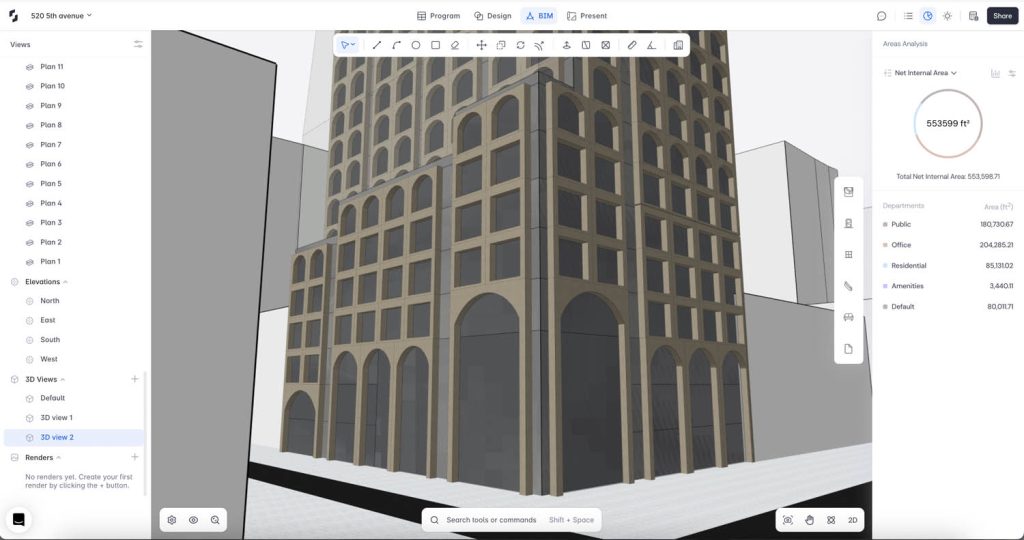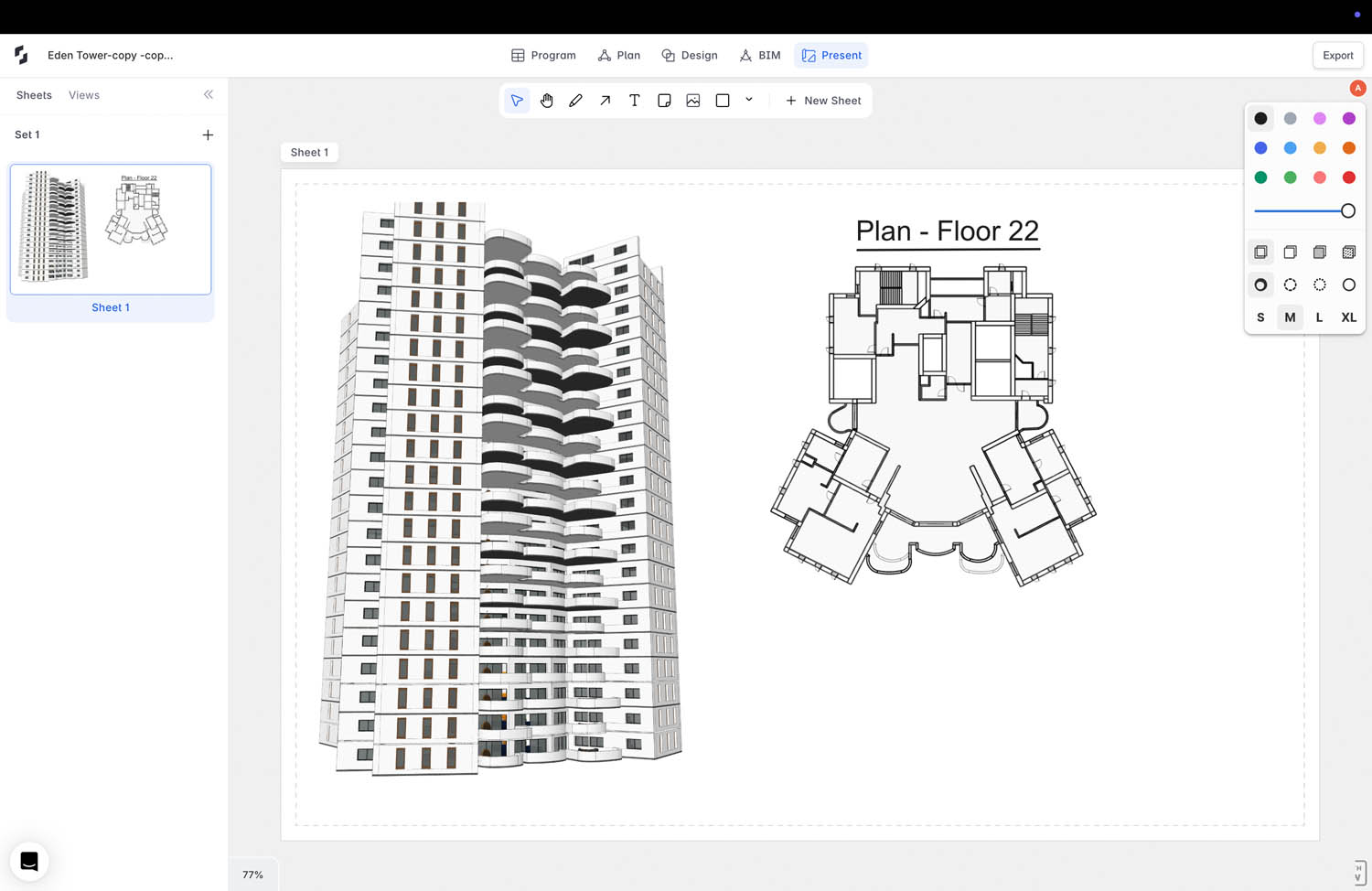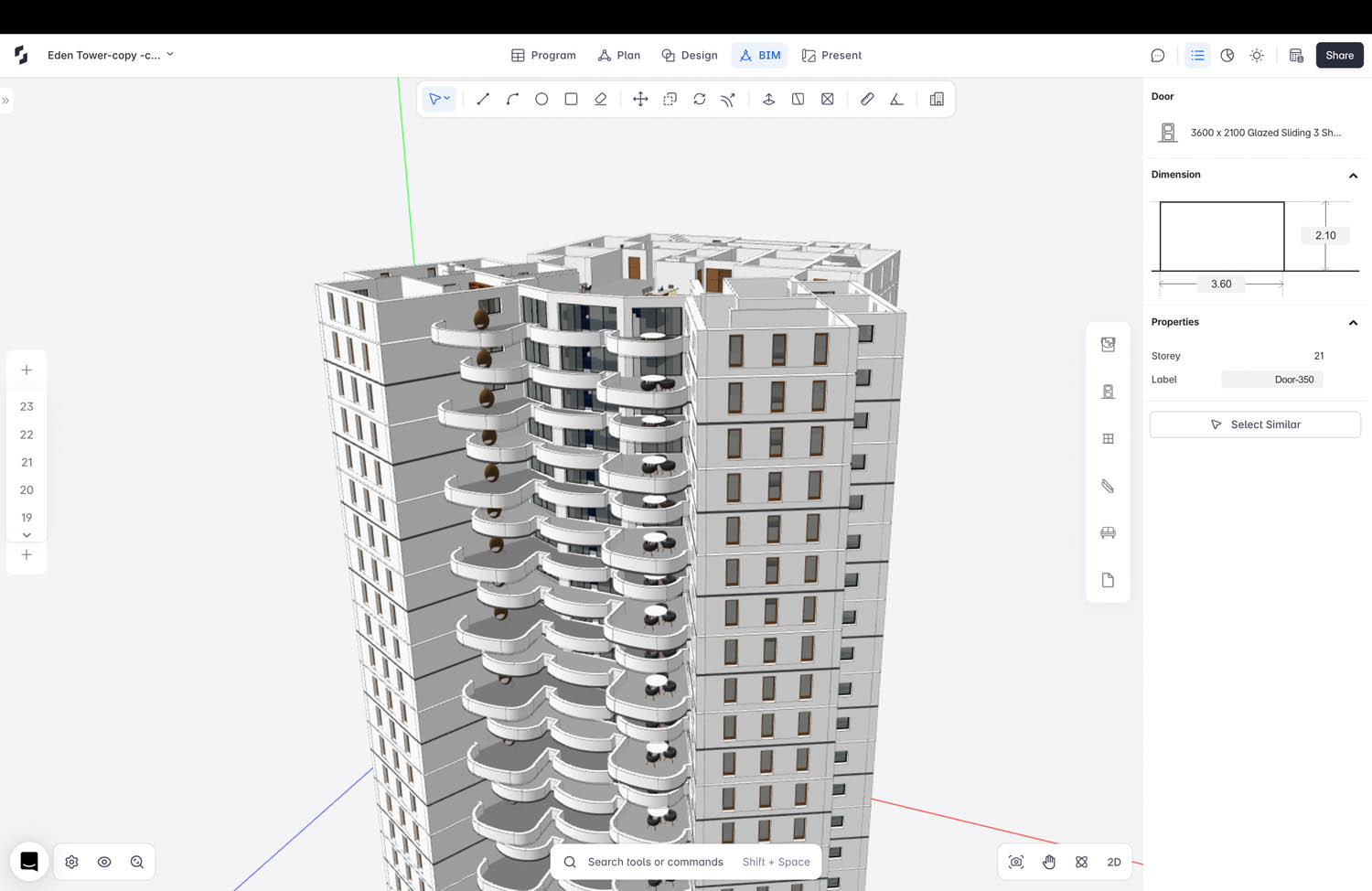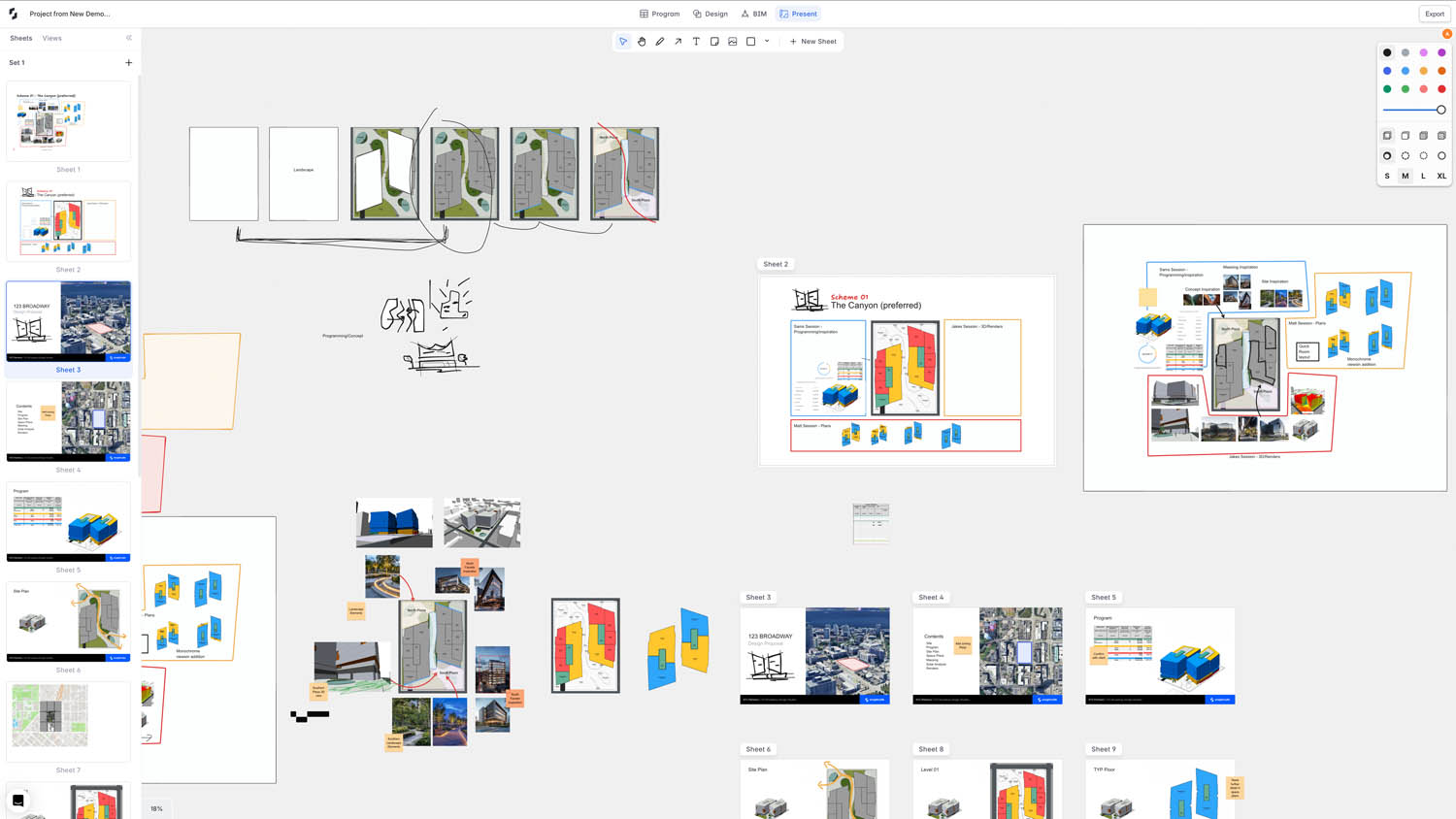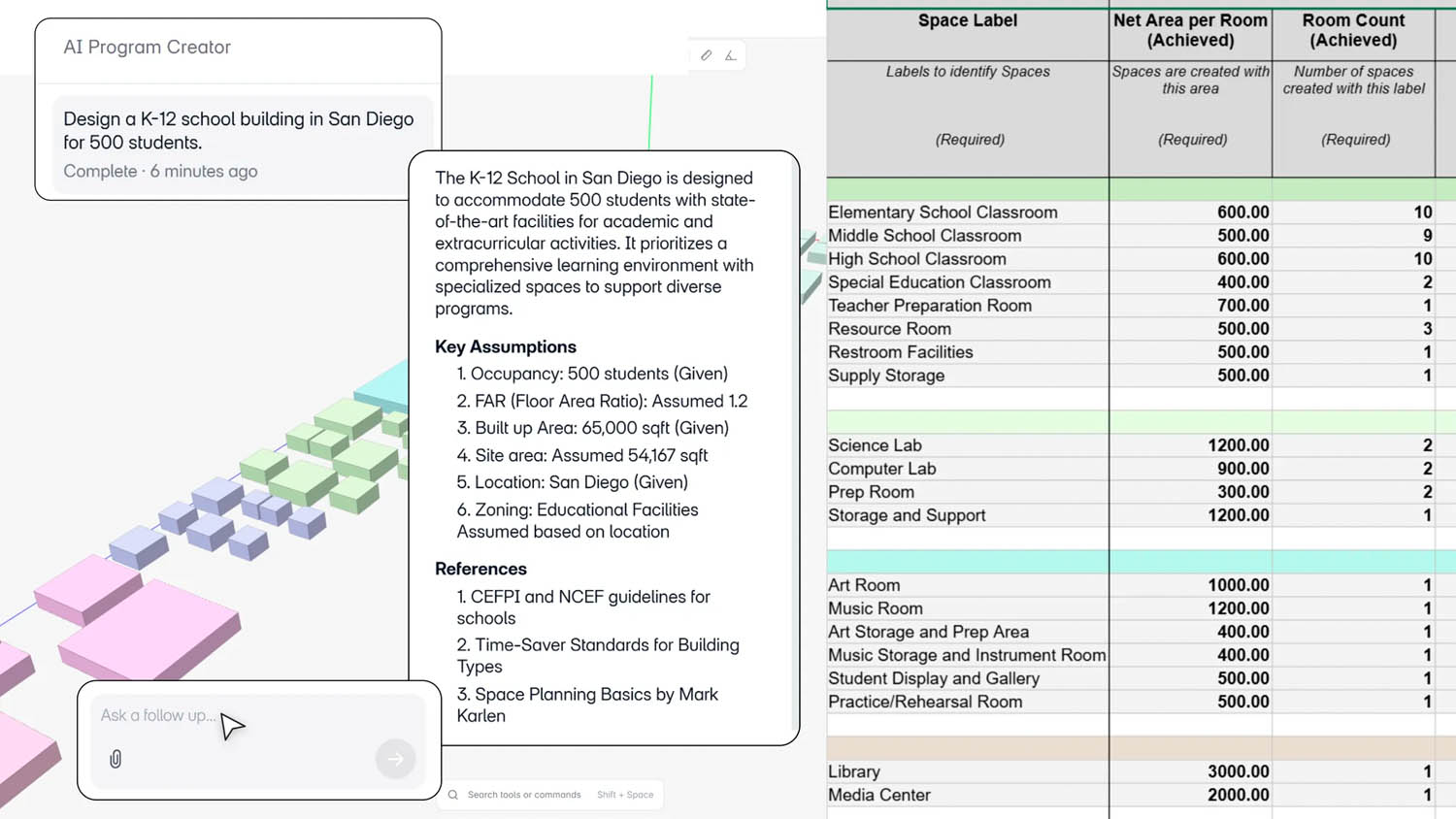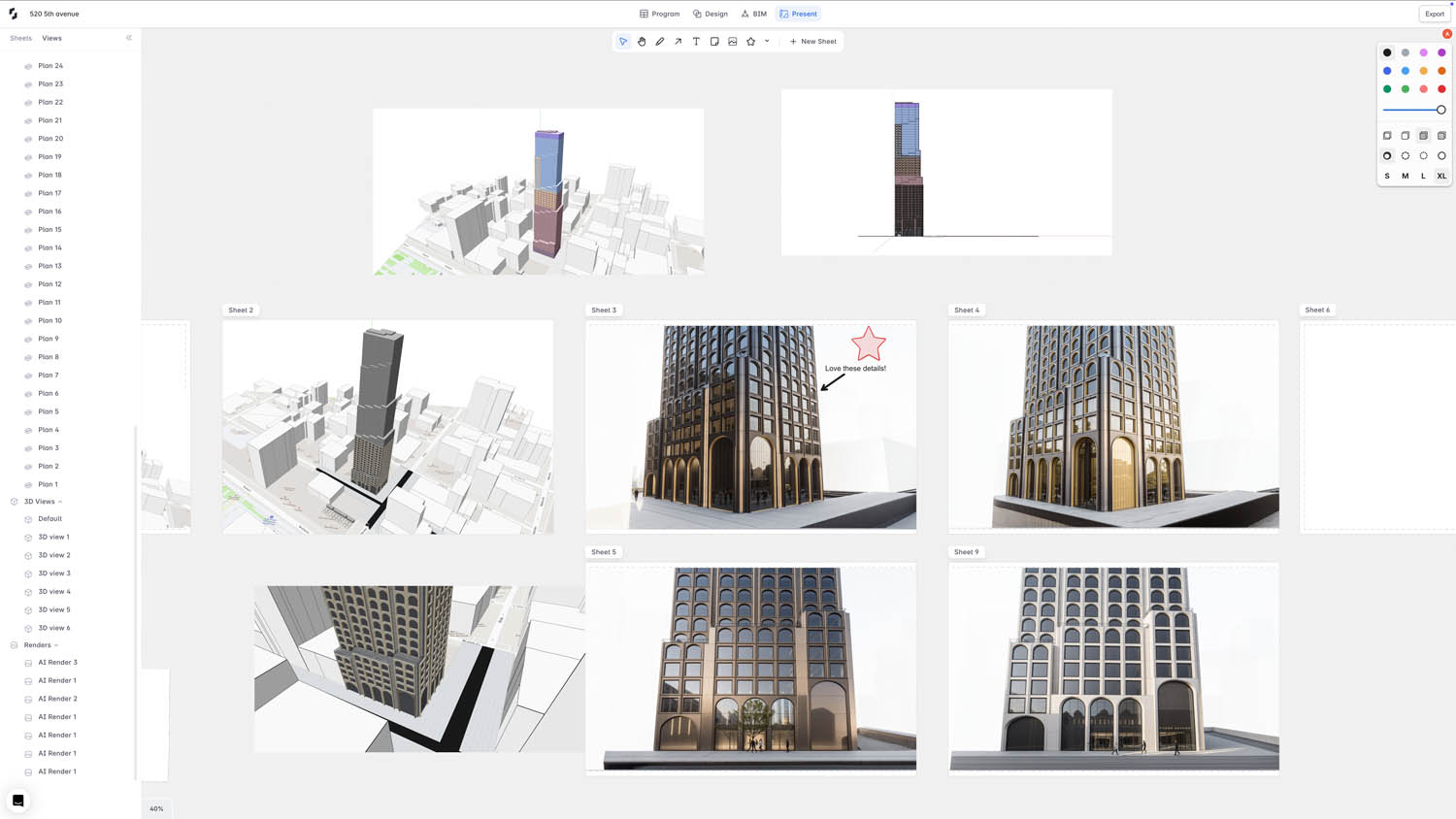Of all the BIM 2.0 players currently vying for customer attention, Snaptrude is the original and probably the most advanced. Until recently, the company took a fairly traditional approach to mapping out its features and functions, albeit in the cloud – but a rethink on segmentation and capabilities is now leading to a more modular approach
BIM is dominated by monoliths. These are single programmes that aim to support the full workflow from concept to documentation and everything in between. If its intention was to compete head-on with these monoliths, albeit with a new, cloud-based offering, a start-up would probably be inclined to build out a similarly monolithic, do-it-all system.
However, it’s starting to look very much like this is not the way that BIM 2.0 will play out.
What seems more likely is a host of companies offering ‘point’ solutions, all based in the cloud and all boasting API integrations and open formats that allow them to ‘speak’ to each other. That will make it possible for customers to choose key design tools from different vendors, in order to assemble their own ‘best of breed’ portfolio of tools. At the same time, the way that design and fabrication is changing will also be helped along by more choice, with vendors offering more focused, industry-specific tools.
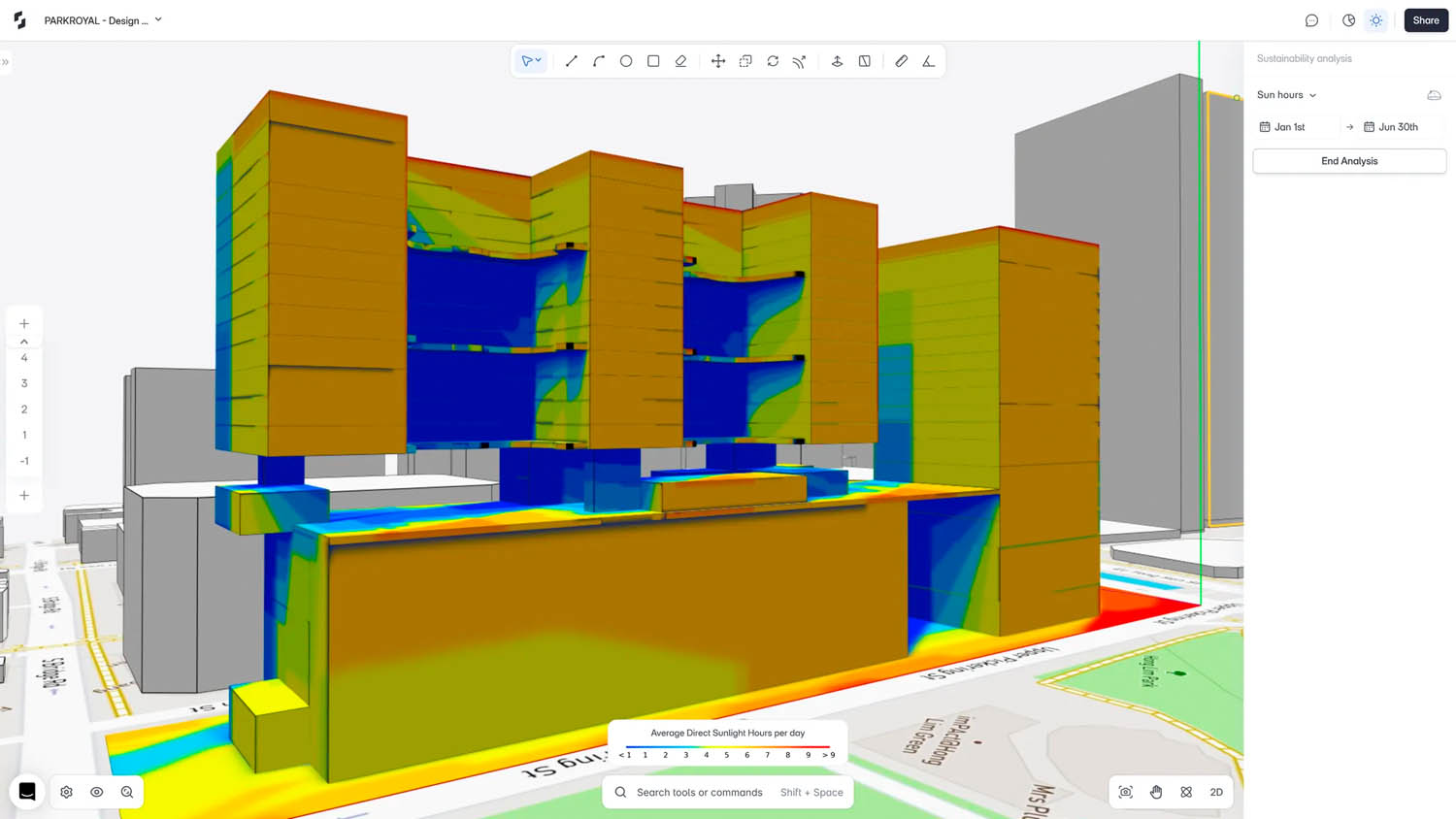
Find this article plus many more in the May / June 2025 Edition of AEC Magazine
👉 Subscribe FREE here 👈
All this spells big changes for BIM. By their very definition, BIM tools are pretty general, while still being specific to the AEC industry. In a world of focused point solutions, we will still need broader platforms in order to design, document and collaborate — but the landscape undoubtedly looks set for upheaval.
AEC Magazine spoke with Snaptrude CEO Altaf Ganihar about the company’s evolving product strategy, and in particular, its recent move towards a compartmentalised platform with AI integration.
Snaptrude is positioning itself as a viable alternative to existing BIM tools, offering a more flexible and automated approach, particularly in the early design stages, while also anticipating a broader shift towards data lakes and AI-driven processes.
As Ganihar explained: “Snaptrude’s new product release breaks down the entire design process scientifically into four modes that can be operated in isolation or connectedly.”
First, he explained, there’s Program, which is used like an Excel spreadsheet to input requirements, along with RFPs, room data sheets, and so on. It focuses on structured data.
Second, there’s Design, which is an open canvas for conceptual massing, form finding, analysis (in areas such as solar) and other design explorations. BIM converts this data into a traditional detailed BIM model in order to add elements such as walls, doors and windows.
Third and fourth are Presentation and Documentation, for creating sheets, presentations and renders.
According to Ganihar, “the significant advantage is that all these modes are connected, allowing data and views to be dragged and dropped between them.”
So while the underlying Snaptrude technology hasn’t changed, its workflow and packaging is now based on tasks, or on the particular phase of a design. That means that users can dip in and out, using the tool for specific tasks without having to commit to the whole feature set — and perhaps continuing to use some of their existing tools.
Snaptrude is currently focused on making early-stage design profitable using its tools and AI. It is seeing this approach resonate at midsize to large firms that currently burn significant billable hours in the concept stages.
Ganihar thinks the incumbents (like Autodesk) should be scared because the focus is shifting from applications creating information to the quality of information and the ease of extracting it with AI
Adoption among such customers often begins by deploying the software on a single project to prove its value, typically in terms of helping to reduce early-stage design spend. If successful, then confidence grows, leading to a gradual replacement of incumbent technologies, often starting with tools like SketchUp first, then eventually Revit.
Architects, particularly when age and experience is taken into account, can be resistant to change. However, early-stage design in Revit has never really been ideal. Ganihar says that, for this particular stage in the design process, customers are more open to shifting to easier-to-use tools.
Tools of tomorrow
When speaking with architects who have looked at BIM 2.0 software, we often hear from them that what they see today is simply not comparable to mature desktop BIM tools. That’s entirely understandable. Customers certainly struggle to place their bets on a new, unknown system simply on the promise of future capabilities.
But Ganihar insists that incumbents such as Autodesk should be scared. Focus is now shifting from applications creating information to the quality of that information and the ease of extracting it, using AI. On top of that, he argues, AI can now easily perform tasks historically reliant on programmers or on specific software tools, simply by querying a model in natural language. These changes, he says, are not just incremental improvements. They represent a fundamental shift in how AEC professionals will interact with software and data, moving towards more automated, AI-driven and data-centric workflows.
On the subject of AI
As AI agents start to appear, the very nature of the industry and what software does will change, Ganihar predicts.
“AI will only work on structured data. Snaptrude’s Program mode is built like a data lake for structured, granular data, which is something other companies like Autodesk are also trying to figure out. Structured data is seen as a door to endless possibilities,” he says.
“At the moment, AI is being used as a co-pilot to generate or refine programs with structured data but this will expand. We are prototyping AI automated adjacency creation, blocking and stacking based on physics models, inspired by AlphaFold. Users can also delegate tasks to AI, much like Gmail’s autocomplete, and refine the AI’s suggestions iteratively. Also, AI can automate mundane tasks such as generating render options on a pinboard, creating presentation slides and documentation.”
Snaptrude is heavily investing in AI, building a machine learning team to accelerate AI development, and is exploring how to expose APIs in the programme environment, so that external AI agents can call and return structured data. An early scripting environment is being built where users can ask AI to write scripts for jobs such as reviewing duct lengths or designing a facade based on sunlight hours.
“Things have become very interesting in the last six months,” is Ganihar’s dry understatement – and we tend to agree!
“AI will do the mundane tasks faster than before, but won’t do the creative tasks, suggesting it will remain an advanced ‘answering machine’ for the next five to ten years,” he continues.
“However, the quality of questions asked by humans will change. Way off in the future, AI has the potential to automate most stages of design, predicting fully designed buildings from AI, based on their internal development. AI will perform functions like real-time clash checking and building code checks. They are evaluating how much of each design stage AI can handle, with the answer increasingly being: ‘Affirmative’.”
All this will, of course, have a big impact on the business models of software firms. Microsoft’s CEO has already announced that, with AI, SaaS is dead. That’s an idea with which some firms in our industry have yet to come to terms.
As Ganihar explained: “Business models will change from traditional seat-based pricing to outcome-based pricing, where companies pay for the results they get from the software. This could make software more expensive per outcome, but reduce the number of seats needed, as firms might not need as many people doing manual tasks. There may well be an argument at some point for making core software use free and only charging for AI use.”
It is perhaps indicative of the fierce competition that’s developing between BIM 2.0 developers and the huge impact that AI is likely to have that Snaptrude has chosen to rationalise its development work.
I can see some capabilities that answer Motif’s initial offering, in concept design and presentation mode. And there is also the realisation that it’s much easier to adopt another design tool by focusing on winning one specific design phase, rather than trying to win everything. If anything, the modes approach that Snaptrude has adopted lends more clarity to its capabilities in each phase.
Snaptrude has the biggest development team in BIM 2.0 Land and it is maintaining its velocity, now stretching to add AI discipline-centric knowledge to each phase.
Altaf Ganihar will be at NXT BLD and NXT DEV in BIM 2.0 indicated events. The company can also be found in the exhibition space.
AI enhanced concept design
Snaptrude CEO Altaf Ganhialf is especially proud of a spreadsheetbased conceptual design tool known as Program mode or Tables.
This integrates an Excellike interface directly with the Snaptrude platform and is specifically designed for early-stage concept design. It functions as a data lake for structured information such as requirements, RFPs, and room data sheets.
This system is live and connected bidirectionally to the 3D design environment, allowing data to be seamlessly linked to massing and form finding. This integration enables architects to create, edit and iterate the program smoothly alongside the design. An AI co-pilot is available to generate or refine programme data. By providing a single, connected environment for structured data and design, it helps reduce early-stage design spend and makes concept design more profitable.

